A new extreme adventure destination, Extreme Park Bali (or Xpark Bali),
has recently opened on Nusa Penida, offering thrill-seekers a breath-taking way
to experience the island’s dramatic landscapes. Rather than just taking in the
iconic view of Kelingking Beach from afar, visitors now have the chance to leap
into adventure—literally—with a 130-meter rope jump that propels them over the
ocean for an adrenaline-pumping experience.
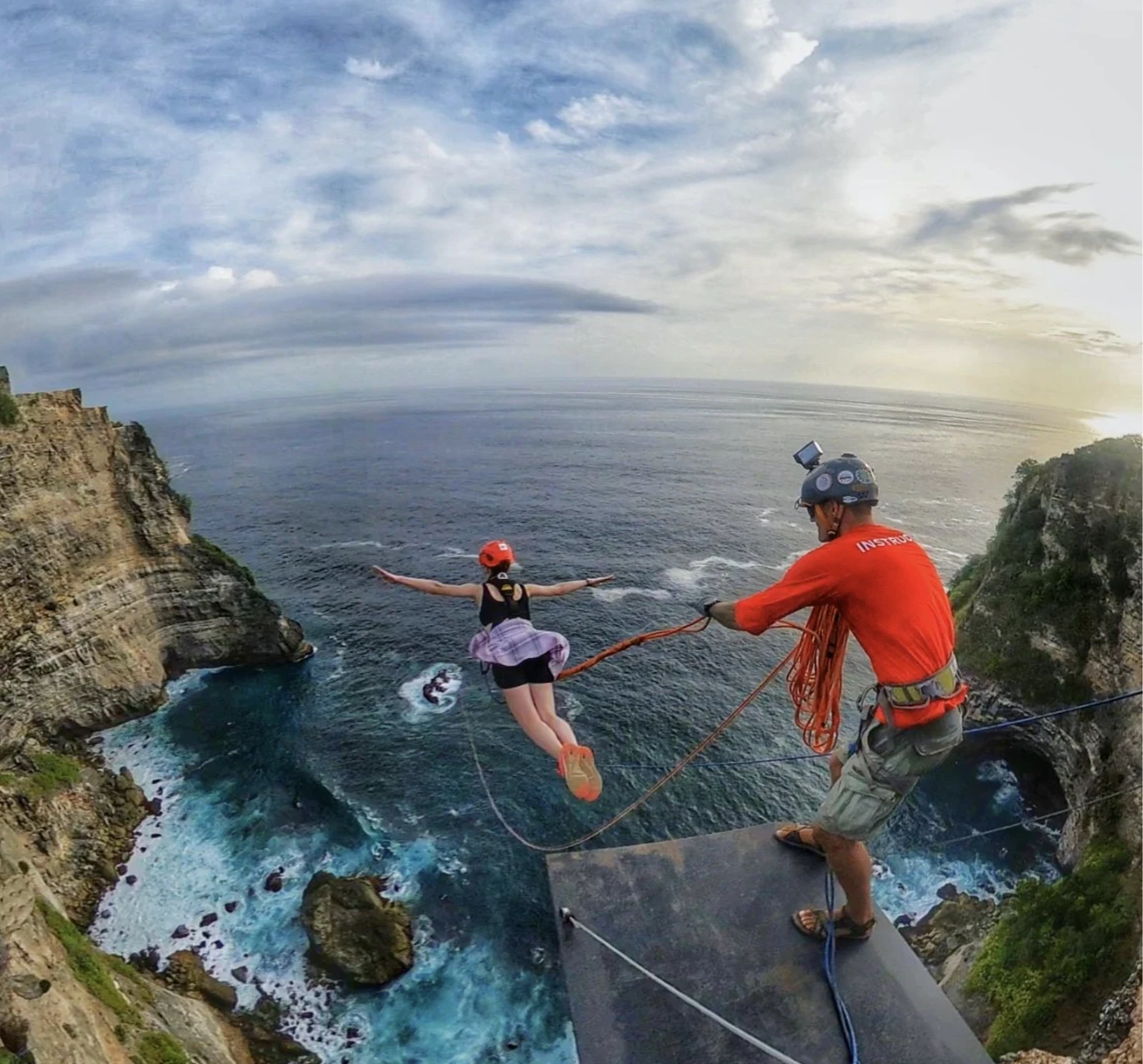
In early 2024, Extreme Park Bali officially launched on the cliffs
above Turtle Beach on Nusa Penida. What makes this park truly extraordinary is
that it was built entirely by hand. From the intricate rigging system to the
jump platform itself, everything was crafted manually, showcasing the founders'
dedication and passion for creating one of the most unique adventure parks in
the world.
Founders of Xpark Bali
Alexey Pykhov, the founder of the park and an experienced rope jumper, along
with his team, has completed jumps from more than 50 structures worldwide. He
even set a world record by jumping from the 492-meter Siduhe Bridge in Hubei
Province, China, achieving a 486-meter free fall. Now, Alexey and his partner
Alexander are in the process of building one of the most unique adventure parks
in the world. We spoke with these thrill-seekers to learn more about their
passion for rope jumping.
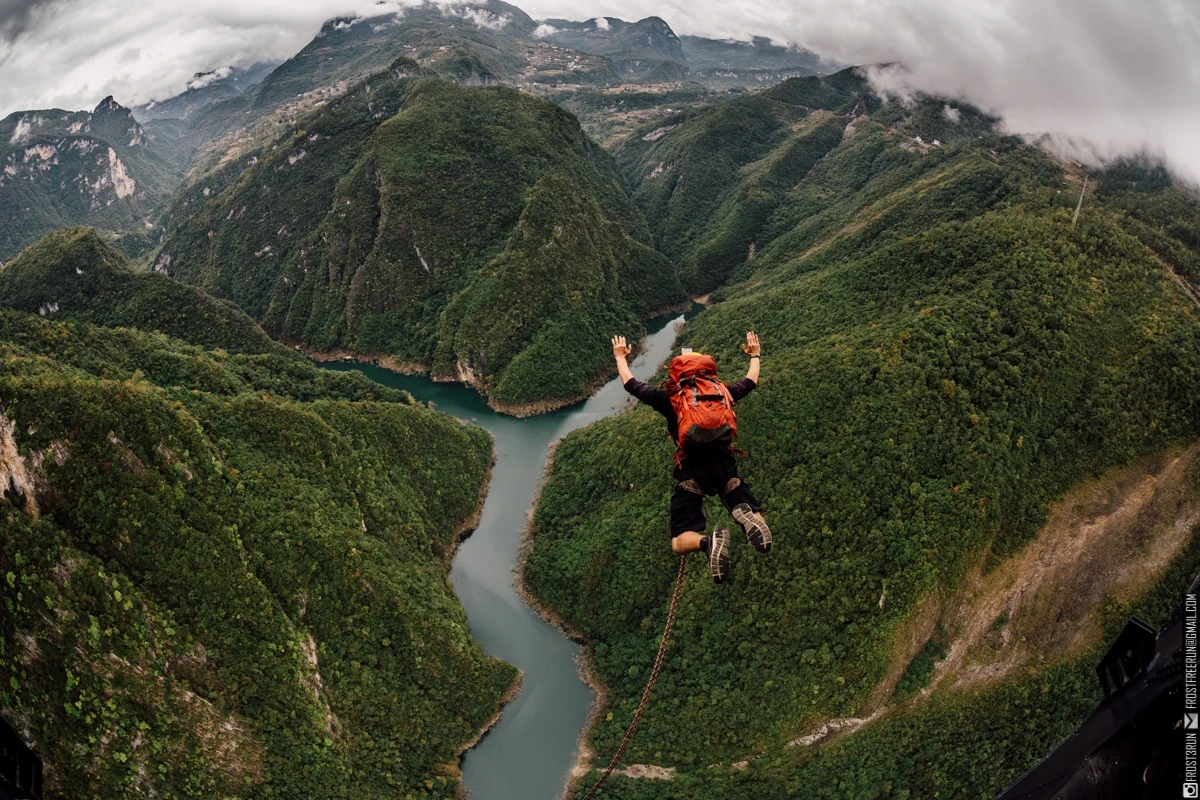
Alexey: I had been searching for a location in Southeast Asia since 2013,” Alexey
shares. “I wanted a place where the laws allowed it, where it was safe, and
where there was a steady flow of tourists. My search eventually brought me to
Nusa Penida.
What is Rope Jumping?
Alexey: This activity is known as rope jumping or rope
swing—it’s not the same as bungee jumping or any other type of jump.
Unlike bungee jumping, where you leap headfirst with an elastic rope attached
to your ankles, leading to uncontrolled rebounds, rope jumping uses
mountaineering ropes, harnesses, and specialized equipment. While there’s free
fall and suspension involved, the technique is entirely different.
The Jump Experience: How It Works
Alexey: The jump starts with about five seconds of free fall from a
130-meter cliff. As the ropes extend, they absorb the shock, and you transition
into a horizontal swing, which prevents any rebound toward the cliff. The
vertical speed slows down, and you remain suspended while we lower a recovery
rope to pull you back up using a winch. The load is evenly distributed across
the harness, which is securely attached to the ropes.
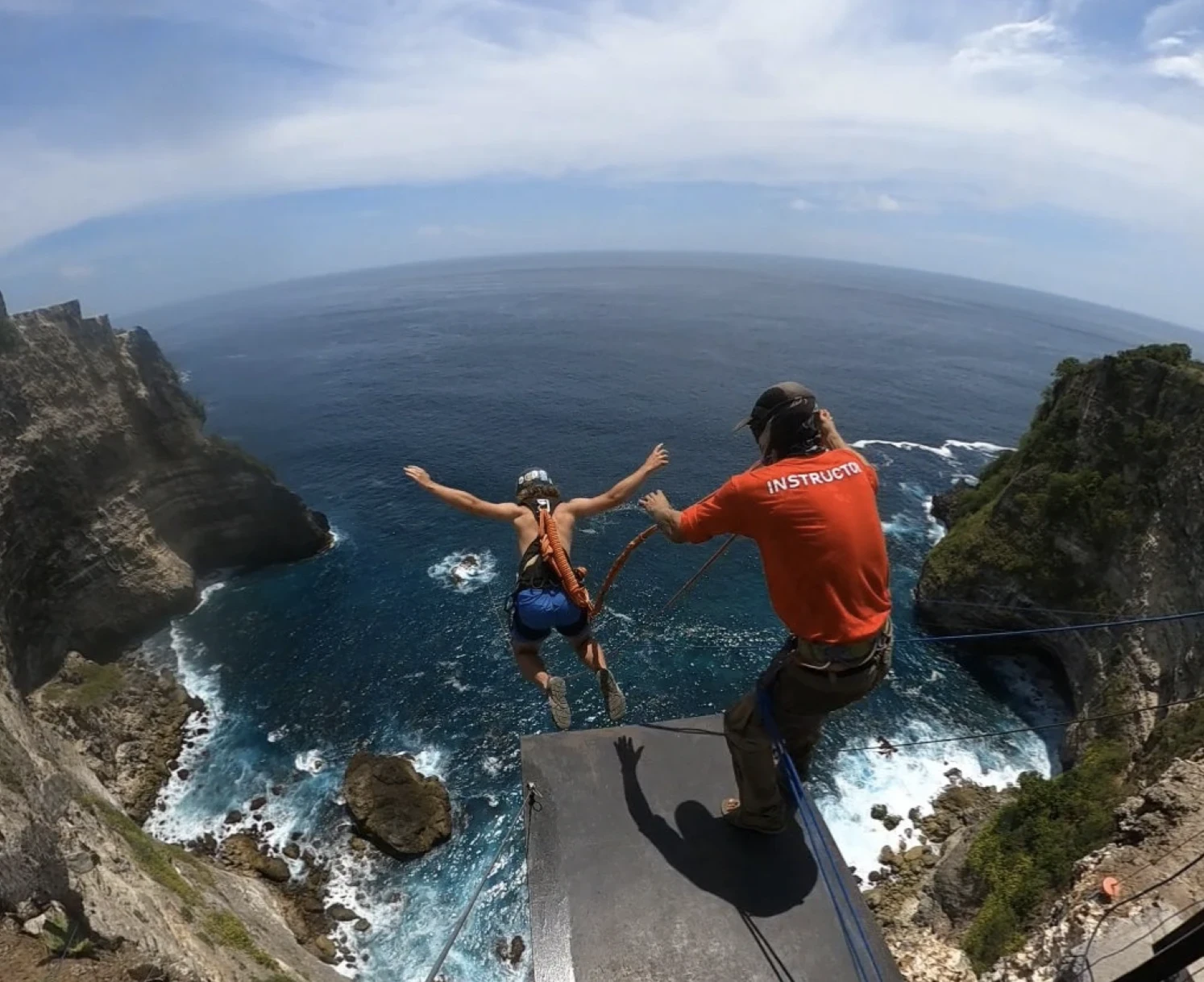
At Extreme Park Bali, we offer video recordings of every jump, using both
handheld cameras and helmet-mounted devices. The footage is then uploaded to
cloud storage, making it easy for participants to share their experiences on
social media. Our park's popularity has grown rapidly, and Instagram reels of
the jumps have already garnered millions of views.
The price for a jump starts at 2,000,000 IDR, with pre-bookings available
via Instagram at @xparkbali. Since January, we’ve seen a steady stream of
visitors, with a big increase in May. Currently, we have at least 15 people
jumping every day, with our record-breaking day hosting 29 participants, all
jumping one after the other.
Safety First: Commitment to Risk Management
Alexey: The park implements strict safety measures to minimize the risks associated
with each jump. Every participant undergoes a thorough inspection, and we
personally oversee each jump from beginning to end. In addition, we’ve trained
a team of five local Indonesian staff members to assist with the process and
ensure safety protocols are followed.
Although Xpark Bali is located on Turtle Beach, it’s not a beach in the
traditional sense—it’s actually a steep cliff with no direct path down to the
water. The cliff forms a U-shape, and we’ve secured safety ropes to create a
reliable jumping point. We also constructed a protruding platform to ensure
jumpers remain clear of the cliff face during their descent.
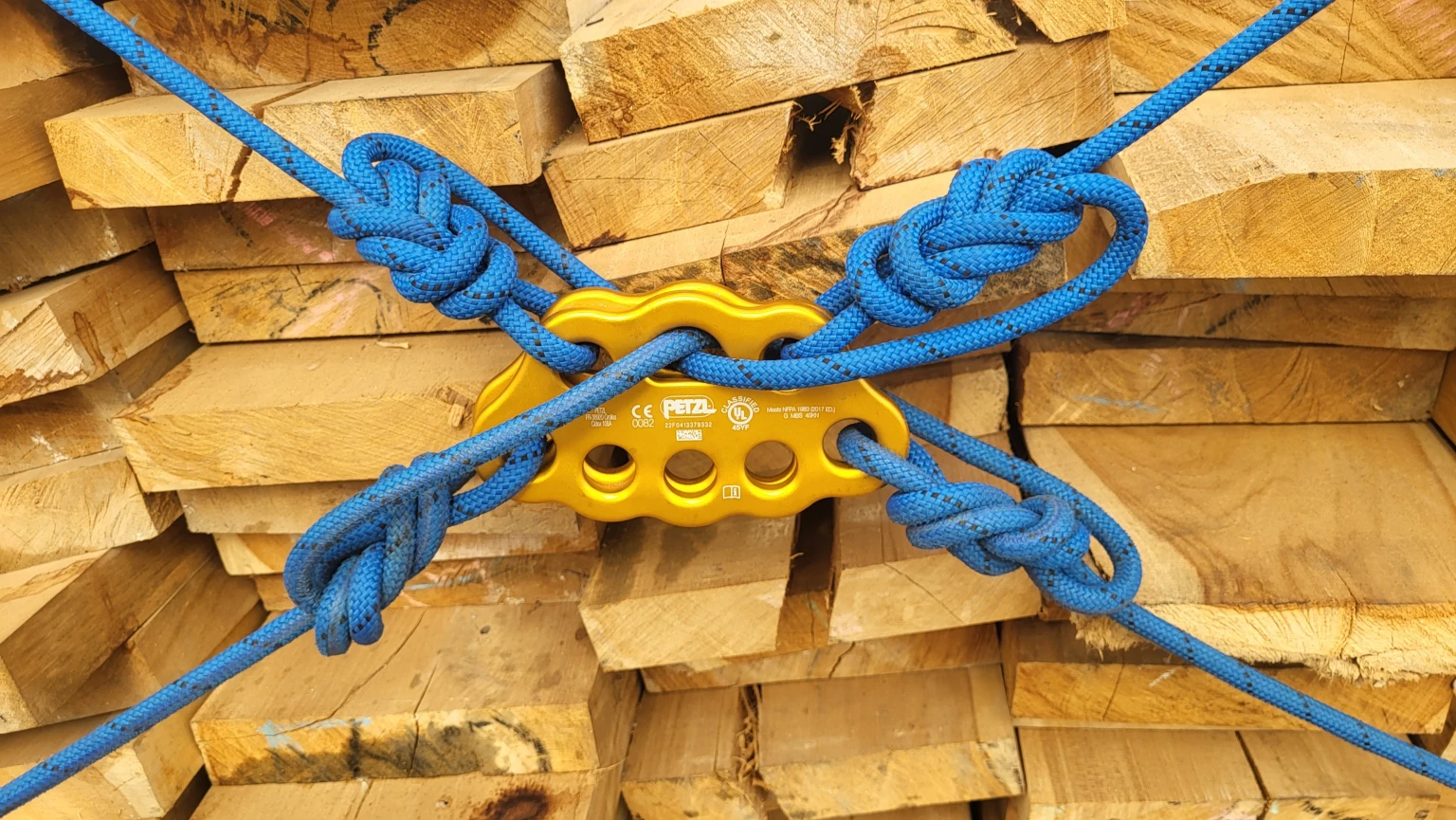
At Xpark Bali, we use only certified gear from top international climbing
and mountaineering brands, all of which is sourced from Europe. The rigging
system, which I originally developed in 2011 when I first started jumping, has
been rigorously tested and is now used by teams worldwide. Every component of
the system is doubled—two ropes, two carabiners—adding an extra layer of
safety. In fact, our safety standards at Xpark Bali go beyond those of
traditional bungee jumping, which typically relies on a single rubber cord.
The park's approach to safety is founded on years of experience, the use of
top-tier equipment, and a rigging system that has been thoroughly tested
through thousands of successful jumps.
Overcoming the Challenges of Launching an Extreme Park in Indonesia
Alexey: From February to July 2023, I gathered information, created a
business plan, and secured an investor—because I couldn’t do it alone. That’s
when things really started moving forward.
One of the biggest challenges is that it’s impossible to conduct jumps
without permission from the landowner. Finding the right person took quite some
time. You can’t simply go to an office and ask who owns the land; instead, you
have to ask around among the locals to identify the owner and negotiate a lease
or purchase. The language barrier made this process even more complicated.
The landowner was selling 7 hectares, but we only needed 750 square meters,
which was more than enough for our purposes. Much of the construction was done
by hand due to budget limitations.
Building and installing the rigging system was particularly tough,
especially along the cliff by the sea. I used my engineering skills to design
the system and handled most of the climbing and rigging, with Alexander helping
whenever possible.
Selecting the Perfect Location
Alexey: I first visited Bali in 2016 and returned just before COVID. I was
scouting potential locations, focusing on the Uluwatu area. Initially, we were
told that jumping near the Uluwatu Temple wasn’t allowed, but after lengthy
negotiations, we reached an agreement. However, the cliffs ultimately weren’t
suitable for my needs, as the wind made jumping unsafe.

During my third visit in February last year, I was determined to make it
happen. By that time, my team, based in Vladivostok, had already tested jumps
on the cliff where the park now operates, but due to various circumstances,
including the pandemic, they didn’t settle there. I pushed through with the
project—everyone else, including Alexander, who supported the idea, joined
later.

Turtle Beach is just a kilometre
away from Kelingking Beach, one of Bali’s most iconic postcard destinations.
That famous dinosaur-shaped cliff is one of the most Instagrammed spots in the
world, and we’re fortunate to be located so close. The location truly speaks
for itself—no other team has a site by the sea as breath-taking as ours. It’s
unlikely that another spot like this will appear anytime soon. In terms of
scenic beauty, our only real competition might be the Brazilians, who jump near
a stunning waterfall.
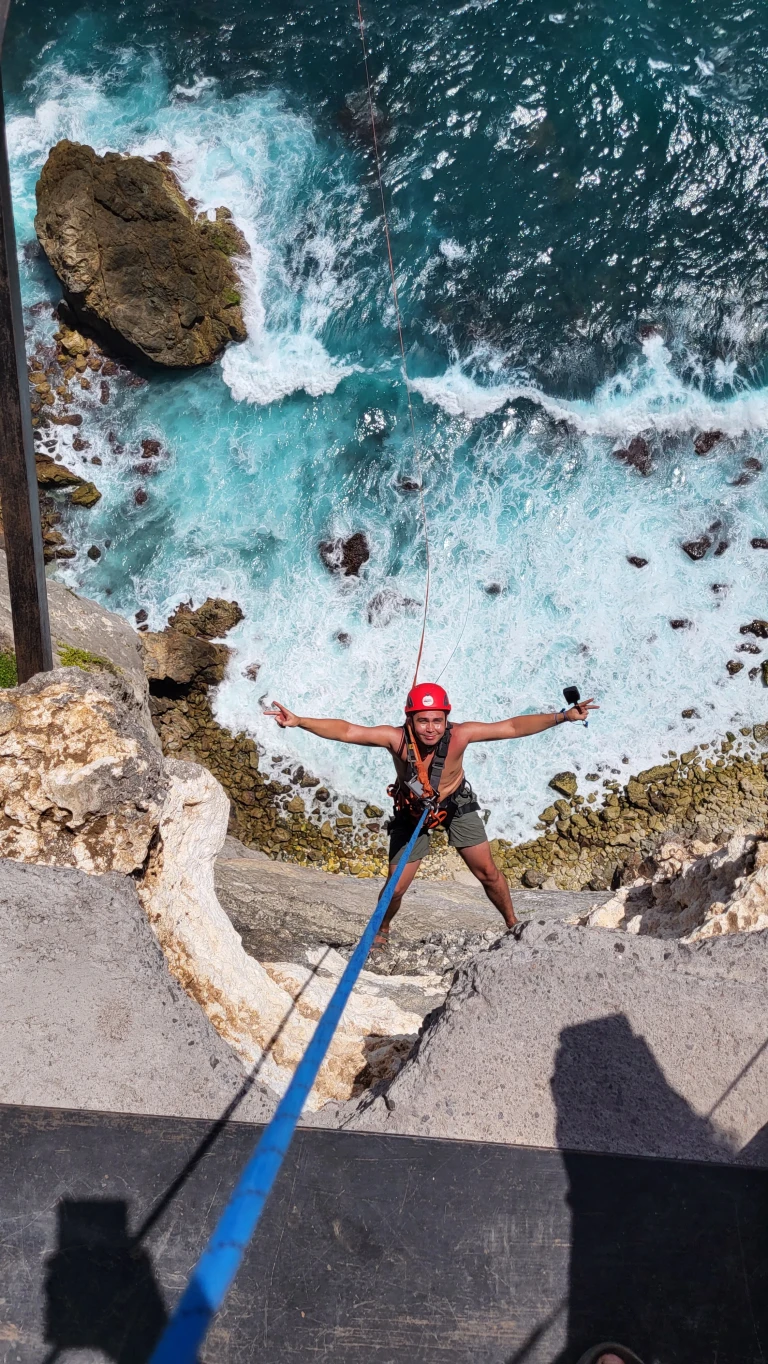
Future Expansion Plans
Alexey: We’re planning to add more greenery, create terraces, and build three
additional geodesic domes (we currently have just one). After each jump,
participants will receive certificates, t-shirts, and stickers. We’re also
working on a foam pit, a small bouldering wall, and a high extreme swing. Bali
is famous for its swings, but most of them are between palm trees—ours will be
over a cliff.
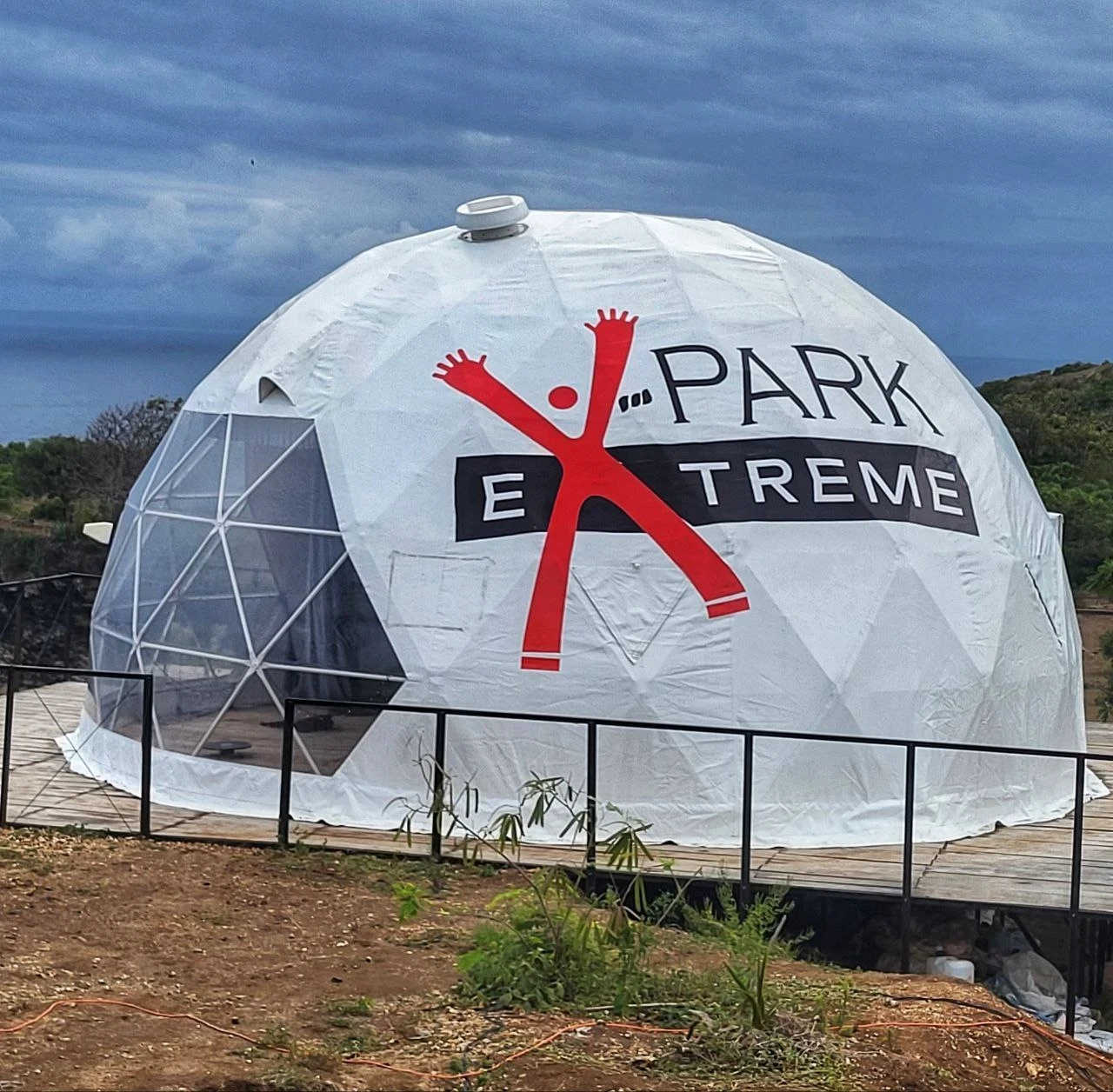
Interestingly, we leased 750 square meters of land and got 2 hectares of
vertical cliff as a bonus. For regular renters, that might not mean much, but
for us, it’s 2 hectares of opportunity! We’re planning to build a via
ferrata—a rock climbing route with metal rungs and safety cables—so people
can climb vertically with waves crashing below them.
The park is expanding, business is booming, and we’re already seeing a
healthy profit. Soon, our extreme park will offer more than just jumps as we
introduce a variety of other adventure-based activities.
We’re not looking to limit ourselves to one location. Extreme Park
is a way to fund future expeditions and new discoveries. We’re already planning
a project at Sipiso-Piso We’re also planning a project at a waterfall in
Sumatra and are in discussions for a potential world-record jump in China. The
Chinese have opened a 565-meter bridge and are constructing a 625-meter bridge.
We’re also keeping an eye on the glass elevator at Kelingking Beach. For
investors and the government, these are infrastructure projects, but for us,
they’re new challenges and opportunities to set records.
Translated from the original article by Valkaaas
You can add one right now!